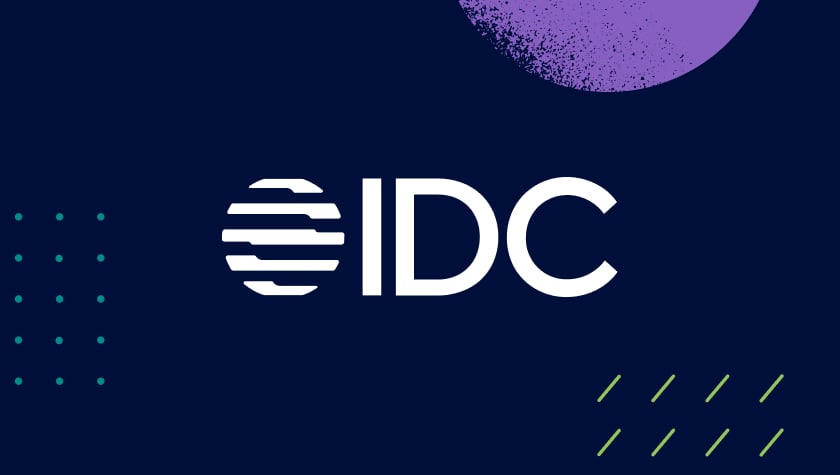
Listen to: Travel Fraud to Watch Out for in a Post-Pandemic World (10 mins):
If there’s one thing that Feedzai’s Q2 2021 Financial Crime Report made clear, it’s this: people are ready to travel again. Unfortunately, so are fraudsters - which is why it’s important to prepare for an uptick in travel fraud.
Based on exclusive data, the Financial Crime Report observed a 21% rise in cross-state spending among U.S. consumers from January to March 2021. This shift is a clear sign that American consumers are on the move again. What’s more, the report also found cross-border payments surged by 410% in the same time period. These shifts follow more than a year of lockdowns and vaccine rollouts, giving people the ability to move about again.
This sharp rise in cross-border payments indicates people are ready to travel again and are seeking to take advantage of new international travel opportunities. Unfortunately, so are fraudsters. After more than a year of lockdowns, many travelers and banks will be ill-prepared for new fraudsters’ scams. Here’s a breakdown of the scams to expect and how banks can prepare to protect customers.
Post-Pandemic Travel Fraud to Expect
People are clearly making plans to travel again after a long hiatus. Unfortunately, fraudsters have their own travel plans – and they don’t even have to leave their homes. A sudden rise in travelers gives these bad actors plenty of opportunities to push a variety of scams. Here are a few travel fraud scams we expect to see accelerate in the coming months.
Fake COVID tests & vaccine passports
Uncertainty over whether travelers need to show proof of vaccination or a negative COVID-19 test to visit a certain area gives fraudsters plenty of opportunities. Earlier this year, some regions limited travel to individuals who could provide a negative COVID-19 test. This shift in regulations created a market for fake test results especially among travelers who needed to travel for work. Earlier this year, law enforcement officials charged several individuals in France, Indonesia, and the U.K. for pushing fake coronavirus test schemes.
Vaccine passports are another hot target for fraudsters. For example, in the U.K., vaccine passports are available through the nation’s NHS mobile app and could be required for people to attend conferences or travel for vacations or for their jobs. Fraudsters are already pushing fake vaccine passports to people desperate to travel via phishing emails, text messages, social media posts, or fake ads. Across the ocean, the U.S. Better Business Bureau is already warning consumers to watch out for potential scams – even though an official national vaccine passport has not yet been issued. Banks should watch for these types of travel fraud scams by monitoring unusual payments from their customers’ accounts.
Fake airline tickets
When the pandemic set in, fraudsters quickly took advantage of a wave of customer ticket cancellations for their own gains. They often did so using purchase scams, a type of authorized push payment fraud in which fraudsters promise goods or services they never intend to deliver. For instance, they might have pretended to be a travel agent offering to cancel travelers’ vacation plans for a fee. However, once the fees were paid, the “agent” disappeared, leaving the victim out even more money. In the post-pandemic world, their tactic shifts to dirt-cheap airline tickets for a fee. But – you guessed it – the tickets never materialize after the fee is paid. Scammers could also attempt to sell fake travel insurance or access to a timeshare for a vacation rental.
A false positive spike
When the pandemic first unfolded, customers had to rapidly change their behaviors by working from home and doing much more of their banking and via eCommerce. This shift in behavior threw many machine learning algorithms for a loop because they weren’t robust enough to adjust to new “normal” behaviors. With vaccine rollouts underway and many restrictions being lifted worldwide, the same problem has emerged.
If banks measure upcoming customer behaviors based on the past three months of activity, they are likely to see a false positive spike. To avoid a false positive flurry, banks should expand their time frames to look beyond the past three months of customer activity. Reviewing 18 months of activity instead will give banks a better idea of what “normal” customer behavior really looks like.
Card present fraud returns
As the Financial Crime report noted, Card Not Present (CNP) fraud accounted for just 18% of all card transactions, including credit cards, debit cards, and prepaid cards. At the same time, CNP accounted for 83% of all fraud attempts. With customers traveling again, in-person card transactions are on track to regain some ground lost because of the pandemic. This means card-present fraud could see an uptick as fraudsters use tactics like credit card skimming to steal physical card information.
How Banks Should Prepare
Feedzai’s latest Financial Crime Report outlined several steps banks can take to protect their customers from travel fraud scams. These steps include:
1. Make use of geo-location data
Financial institutions can gauge whether fraud is taking place by comparing the distance to the customer’s registered mobile device and the location where the transaction is taking place. For example, if the customer’s device is located in New York but the transaction is taking place in Buenos Aires, then an alert should be raised. FIs need to use all available data to accurately assess the risk of fraud.
2. Consider authentication methods
How a transaction gets authenticated should also be considered when determining risk levels. Card-present transactions authenticated with EMV-based chips or PINs pose lower risks than transactions that use magnetic stripes. Considering the method of authentication can help FIs to more clearly assess the transaction’s risk level.
3. Analyze longer timeframes
With customers shifting their behaviors from lockdowns to post-pandemic activities, it’s important for banks to consider a wider timeframe to analyze past activities. Expanding or stretching the window of past customer activities to the pre-pandemic period, enables FIs to better understand what “normal” behavior really is and offset anomalies. This applies to both machine learning algorithms and rules-based systems.
4. Take a proactive approach to fraud
With customers traveling again, the behaviors that FIs have observed over the past year are going to change again. FIs can prepare for new behaviors now, instead of waiting to see a wave of false positives or declined transactions. Consider factors like risky merchant category code, previously compromised POS systems, location, and transaction value. This will enable your FI to address any obvious points of concern before serious problems develop. FIs should also consider the strategies they had in place prior to the pandemic and reintroduce them if necessary.
5. Use two-factor authentication (2FA)
In fraud prevention, understanding who the good guys are is as important as figuring out who the bad guys are. Two-factor authentication (2FA) is a significant tool for this goal. 2FA verifies a customer’s identity and device access, introducing trust into the fraud prevention toolbox. Customers are more likely to view it as a form of protection than as an inconvenience.
6. Teach customers how to protect themselves
Banks can also educate customers about the steps they can take to keep themselves safe from fraudsters as they travel. This includes encouraging customers to turn on their mobile app notifications while traveling to immediately alert them about potential fraud. FIs should also recommend customers use established credit and debit cards instead of new ones when traveling, make small, practical purchases upon arrival, only use trusted bank ATMs instead of ones at bars or restaurants, and avoid handing their physical card to a cashier when possible.
After more than a year of lockdowns and social distancing, people are clearly excited to be traveling again. Let’s make sure fraudsters have fewer reasons to be as excited as legitimate customers.
As global consumers emerge from lockdowns, fraudsters are eager to take advantage of the latest behavioral changes. The Feedzai Financial Crime Report Q2 2021: The Dollar Takes Flight outlines the scams that pose the greatest threat to consumers and banks. Download the report to learn more.
Share this article:
Related Posts
0 Comments6 Minutes
A Guide to Secure, Seamless User Authentication in Payments
Online payments demand a delicate balance between security and user experience. Consumers…
0 Comments7 Minutes
Combating Emerging Scams in the Philippines
The Philippines is witnessing remarkable growth in digital banking. Unfortunately, a…
0 Comments5 Minutes
Feedzai is a Leader in the 2024 IDC MarketScape for Enterprise Fraud Solutions
Exciting news! Feedzai, the world’s first RiskOps platform, is proud to have been named a…

